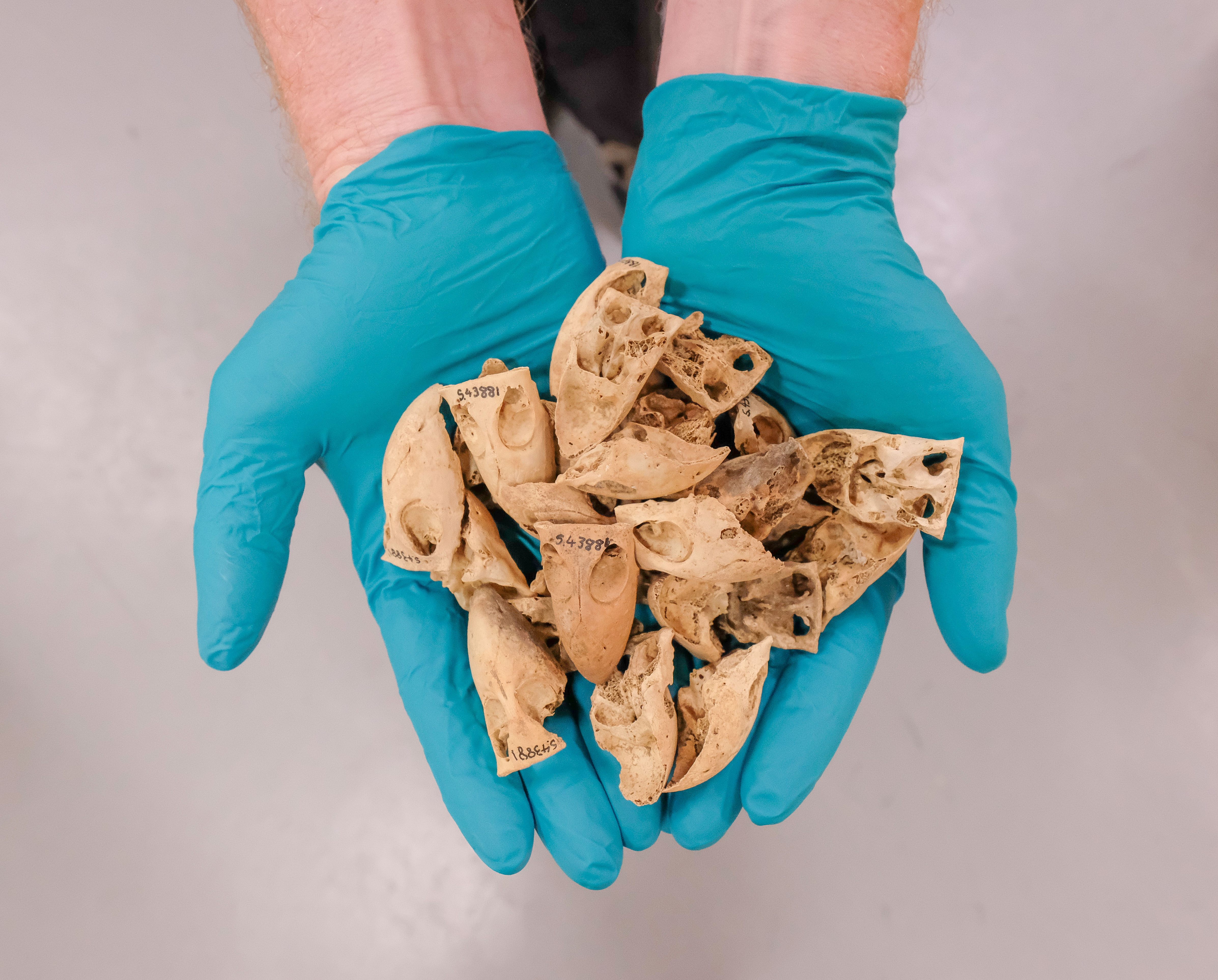The Pit of Death That Holds the History of New Zealand’s Flightless Birds
A natural trap that became a grave for thousands of avians.

The lush vineyards of Martinborough, New Zealand, sit upon a thick crust of limestone. At one time, a few thousand years ago, the rocky landscape was entirely covered with thick native bush, and was home to countless reptiles and flightless birds, carousing and careening beneath the canopy, with nary a human in sight. The forest also concealed the limestone’s pits and troughs—presenting a fatal risk to clumsy or unwary kakapo or takahe. Thousands of these birds met their demise in one particular hidden limestone cave, known technically as a “pitfall trap.” Once they fell in, there was no way out without flight-functional wings. Over the last century, enthusiasts and scientists have collected fossils from as many as 1,000 individuals from this cave, making it the richest site in the whole country for avian and reptilian fossils.
From the outside, the cave seems unspectacular, but no one knows quite how deep it goes. A deer hunter first stumbled across it in 1914, without imagining the vast paleontological treasures within. Beginning in 1920, regular expeditions have been made, with several tons of earth and bones excavated so far. Most recently, New Zealand’s national museum, Te Papa, sent vertebrate curator Alan Tennyson in as part of a digging party. It is thought that the first 1,000 skeletons barely scratch the surface. There could be thousands more.

In this last dig, so many samples were extracted that only about half have been sorted. So far, Tennyson has identified seven North Island takahe, 80 kakapo, 25 moa, 30 kiwi, 90 Finsch’s ducks, 11 weta, and 22 adzebills. The adzebills (a three-foot-tall, dodo-like bird) and moa were both hunted to extinction not long after the first Polynesian settlers arrived in the 13th century. Finsch’s duck, a flightless waterfowl that was at one time the most common duck in the country, seems to have gone extinct around 1870, again related to hunting, and human-introduced mammals. And of the five species of kiwi native to New Zealand, two are endangered, two vulnerable, and the last at risk. Just 154 kakapo, a cuddly flightless parrot, remain, and about 300 takahē, a flightless rail. (The weta, a large and horrible bug, is also endangered.)
These fossils suggest that these currently extinct, rare, or special birds were once unexceptional, even commonplace, in the region. For now, as scientists catalog their treasures, the cave continues to hide its true depths. “In the future,” Tennyson said, in a statement, “better technology might come along that helps us do a more systematic excavation and allows us to know how deep the pit goes.”






















Follow us on Twitter to get the latest on the world's hidden wonders.
Like us on Facebook to get the latest on the world's hidden wonders.
Follow us on Twitter Like us on Facebook